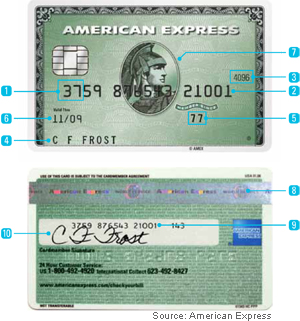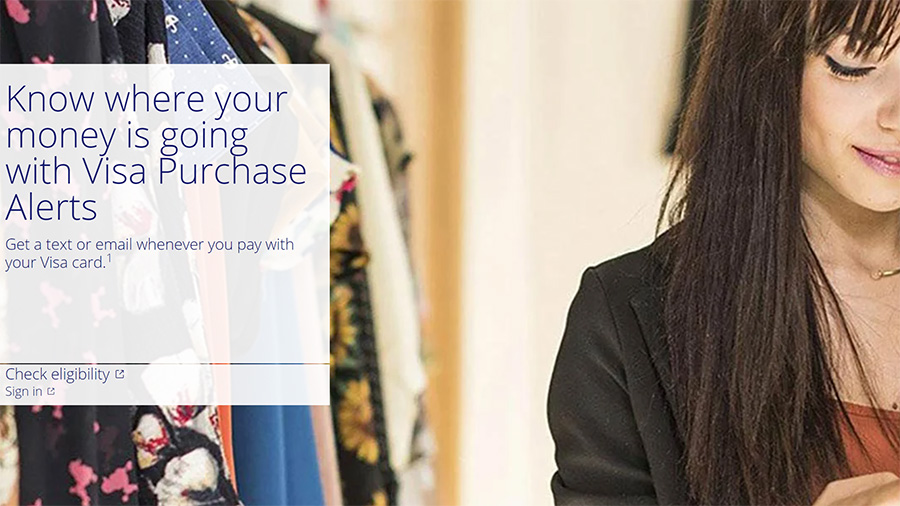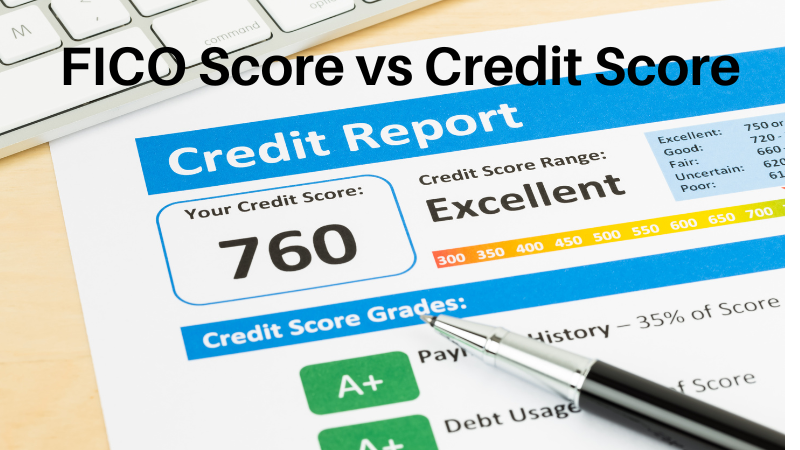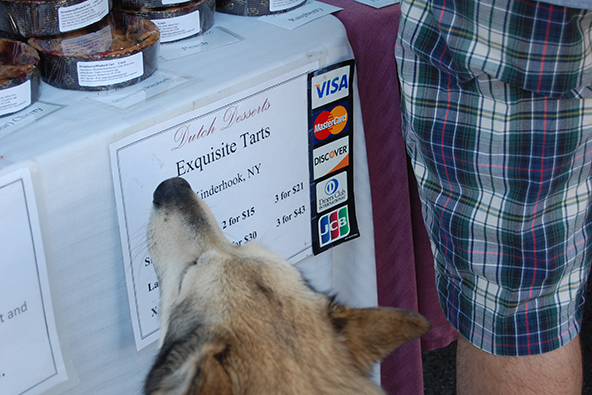10 Signs of a Valid American Express Card

American Express cards are unique among the credit and debit cards issued by the major U.S. card companies. By that I don’t mean that AmEx’s card programs are all that different from their competitors’. Well, perhaps some of them are, but other issuers have programs which are so similar to AmEx’s that you would not be able to tell them apart, unless you saw the brand logos on the terms and conditions disclosure.
The uniqueness of American Express cards can be found in some of the security features on their cards. In this post I will review these features and will explain how to recognize their validity. Below you will find the answers to the following questions:
- What is the American Express card number format?
- What do American Express numbers start with?
- What is the American Express card number length / how many digits does an AmEx card have?
- How do you recognize a valid AmEx number?
- What are the AmEx security features and how to recognize a counterfeit card?
- How do you recognize a potentially fraudulent AmEx transactions?
- What are AmEx’s fraud procedures?
Let’s get started.
American Express Card Number Format and Security Features
There are several different types of American Express cards and not all of them will display all of the security features listed below, but most of them will. Moreover, the American Express card number format will always be the same. Here is how to recognize a valid AmEx card:
 What does the AmEx card number start with? All American Express card account numbers are embossed and begin with “37” or “34”. This rule applies to all AmEx cards. By comparison, Visa card numbers begin with “4,” MasterCard’s start with “5” and Discover’s — with “6”.
What does the AmEx card number start with? All American Express card account numbers are embossed and begin with “37” or “34”. This rule applies to all AmEx cards. By comparison, Visa card numbers begin with “4,” MasterCard’s start with “5” and Discover’s — with “6”.- What is the American Express card number length and how is it formatted? AmEx account numbers are embossed, 15-digit long, with no alterations and spaced in three blocks of 4, 6 and 5 digits from left to right: “3xxx xxxxxx xxxxx”. This is another unique AmEx security feature. In contrast, Visa, MasterCard and Discover numbers are all 16-digit long and spaced in four groups of four digits each.
The AmEx card number format complies with the rules set by the American National Standards Institute (ANSI), which is the organization charged with the task of allocating issuer identification numbers (IINs) to the card networks. For all networks, the IIN is always comprised of the first six digits of the card number and in the image to your right it is “375987”. - What is the AmEx Card Identification Number? The Card Identification Number (CID) is AmEx’s card security code and is the equivalent to Visa’s CVV2, MasterCard’s CVC 2 and Discover’s CID. Unlike its competitors who all use three-digit formats and place them on the back of their cards, either in or immediately to the right of the signature panel, AmEx’s CID is four-digit long and is printed above the embossed card number on the right or left side of the card’s face.
- Where is the cardholder name located? The cardholder name is printed in the lower left corner of AmEx cards, just as the rival payment networks do it.
- Where is the AmEx account opening date located? The “Member Since” date is embossed to the right of the expiration date. By comparison, Visa, MasterCard and Discover all place the “Member Since” date to the left of the expiration one.
- Where is the AmEx expiration date and how is it formatted? The expiration, or “Valid Thru,” date is embossed above the cardholder name field, in the format “mm/yy”.
- How should the Centurion image look like? The Centurion image is of course unique to the brand (not to mention trademarked). It is present on some, but not all, of the company’s cards, it is phosphorescent and the words “AMEX” are visible under UV light.
- Where is the hologram located? Some AmEx cards feature a hologram of the Centurion image embedded into the magnetic stripe.
- How does the AmEx card number look like if printed within the mag stripe? Also uniquely, the account number is printed within the signature field of most AmEx cards and it must match the embossed one on the front of the card and the one printed on the transaction receipt. In contrast, the competitors only print the last four digits of their card numbers in the signature field.
- Where is the signature stripe located? The signature field is located below the magnetic stripe, much as it is on Visa, MasterCard and Discover cards. The words “Cardmember Signature” are printed underneath it.
Again, some AmEx cards will not display all of the above security features. For example, you will not see the Centurion image on American Express Blue cards and there may be other missing features. However, any security features that are present must adhere to the above specifications.
How to Validate AmEx Card Numbers
AmEx card numbers, as well as most other credit card numbers, can be validated using the Luhn algorithm (also known as the Luhn formula or the “modulus 10” or “mod 10” algorithm). It is a very simple procedure, which verifies the card number in the following manner:
- Starting from the rightmost digit, called the “check digit”, moving left, double the value of every other digit (in fact, as AmEx numbers are comprised of odd-numbered digits — 15 — it doesn’t matter whether you start from right or left). If the resulting sum of each doubling operation is greater than 9 (e.g. 5 x 2 = 10), then add the digits of these sums (e.g., 10: 1 + 0 = 1 or 18: 1 + 8 = 9).
- Add up all the resulting digits, including the odd ones, which were not doubled.
- If the resulting total ends in 0, the card number is valid according to the Luhn formula; otherwise it is not valid.
For example, let’s validate the following AmEx number: “371238839571772”. Here is what we get when we follow our three-step process:
| Account number |
3 |
7 |
1 |
2 |
3 |
8 |
8 |
3 |
9 |
5 |
7 |
1 |
7 |
7 |
2 |
|
| Double every other digit |
3 |
14 |
1 |
4 |
3 |
16 |
8 |
6 |
9 |
10 |
7 |
2 |
7 |
14 |
2 |
|
| Sum |
3 |
5 |
1 |
4 |
3 |
7 |
8 |
6 |
9 |
1 |
7 |
2 |
7 |
5 |
2 |
70 |
The end result — 70 — ends in 0, so our number passes the Luhn algorithm test. Of course, the number’s validity does not eliminate the possibility that the card may still be counterfeit, as we will see in the next paragraph.
How to Recognize a Counterfeit AmEx Card
Altered cards are “real” in the sense that they can be processed for payment, but are changed to be passed off as another card. Please review the items below and if you find yourself in such a situation, you may be dealing with an altered card.
1. Overall appearance of the card:
- Does any part of the card look dull compared with the rest of the Card? (Valid American Express cards have a high-gloss finish.) Of course, cards can wear out after a few months of heavy use, so be careful with this one.
- Is the card’s surface bumpy or is the card bent around the edges?
2. Front of the card:
 Is the black ink on the embossed card number or the cardholder name smudged or messy?
Is the black ink on the embossed card number or the cardholder name smudged or messy?- Do the embossed numbers appear to be out of line, crooked or misspaced?/li>
- Is the card number or cardholder name printed in a typeface that is different from the American Express typeface?
- Do any “halos” of previous numbers appear under the embossed account number?
- Does the name printed on the sales receipt not match the name embossed on the front of the card?
3. Back of the card:
- Does the card number on the sales receipt not match the number imprinted within the signatures panel on the back?
- Is the card number printed on the back different from the number embossed on the front or has it been chipped off or covered up?
- Is the magnetic stripe deliberately scratched or destroyed, forcing you to manually key-enter the account number?
- Is the signature panel on the back whited out with some correction fluid, taped over or erased?
If any of these suspicious conditions apply, follow your store procedures or call American Express Authorizations at 1-800-528-2121 and state that you are making a “Code 10” call. You will then be instructed how to proceed with the transaction.
How to Accept AmEx Payments
Every time a customer presents the American Express card for payment at your store, do the following:
- Swipe the card or take its imprint. If you process American Express payments electronically, swipe the card through your point-of-sale (POS) terminal. If the magnetic stripe cannot be read and you have to manually key-enter the transaction information, an you will have to take an imprint of the card.
- Obtain a transaction authorization. You are required to obtain a 6-digit approval code for each AmEx transaction. The authorization process will be handled by your payment processor.
- Verify that your customer is the authorized cardholder. The American Express card is not transferable, meaning that only its authorized holder can use it for payment.
- Verify that the card is not expired. I’ve already showed you where the expiration date is located and in what format it should be. Be advised that no AmEx card can be used past its “Valid Thru” date.
- Match the embossed number on the front of the card to the one on its back and to the one on the sales receipt. If a different number is printed on the sales receipt, this could indicate that the card has been altered or otherwise tampered with. If that is the case, call American Express Authorizations at 1-800-528-2121 and immediately state that you are making a “Code 10” call. The operator will then ask you a series of “yes” and “no” questions and will instruct you how to proceed with the transaction.
- Compare your customer’s signature on the sales receipt to the one on the back of the card. Make sure that the two signatures reasonably match each other and correspond to the name embossed on the front of the card.
- Compare the name that is printed out on the sales receipt to the one embossed on the front of the card. If the two names do not match each other, call American Express Authorizations at 1-800-528-2121 and state that you are making a “Code 10” call.
Follow these steps every time you accept an AmEx card for payment and implement the fraud prevention procedures that follow.
How to Identify Fraud
You will need to be able to identify counterfeit AmEx cards and suspicious customer behavior, which may indicate fraud. Listed below are the most prominent signs of potentially fraudulent card transactions and the best practices for responding to them.
- Question a transaction where the signature on the sales receipt does not match the one on the card, or does not look like the name embossed on the front of the Card. If that is the case, make a Code 10 call (see above).
- Be wary of customers who buy large quantities of expensive merchandise without paying much attention to things like color, size or product feature or, in the case of clothing, without trying them on. Such customers, if committing fraud, often come in just before closing time. Criminals also try to take advantage of busy shopping days and crowds, when sales people may be overwhelmed and less attentive.
- Look out for customers who come in frequently to make small purchases with cash and then return to make additional purchases of very expensive items, but this time paying with a credit card.
- Criminals are often rude and rushing sales people in the hope of distracting them.
- Make sure that the card is not expired.
 Do not accept cards that look to be physically altered (for example, painted-out signature panels or re-embossed names and account numbers). See above for details on AmEx card security features. For instance, in the image to the right, the card’s signature panel has been altered. How do you know? Well, we can immediately see that the card’s 15-digit number is not printed within the signature panel, as it should be.
Do not accept cards that look to be physically altered (for example, painted-out signature panels or re-embossed names and account numbers). See above for details on AmEx card security features. For instance, in the image to the right, the card’s signature panel has been altered. How do you know? Well, we can immediately see that the card’s 15-digit number is not printed within the signature panel, as it should be.- If the account number embossed on the front of an AmEx card does not match the one printed on the back of the card as well as on the sales receipt (as is the case in the image to the right, where it is missing altogether), the card may have been altered.
- Do not process payments in which your customer does not present her card, but gives you its account numbers from memory, a slip of paper or an old sales receipt.
- Be on alert if your customer has signed the card with a felt tip pen or asks to see the card before signing the sales receipt (that assumes that you have the card in your possession throughout the payment process, which you should be doing in order to inspect its security features).
- Remember that only the person whose name is embossed on the front of the card is authorized to use it — the card is not transferable.
If you suspect fraud, either call American Express Authorization at 1-800-528-2121 and tell the operator of your concerns or follow your store’s established security procedures.
The Takeaway
As you see, AmEx cards are easy to tell apart from cards of the other major brands. More importantly, their security features help you verify each card’s validity. That is, if you are paying attention. You should examine each card presented for payment, while you are awaiting the authorization approval. Make sure all alphanumeric digits are clear and even and treat any fuzziness as a sign that the card may have been tampered with. The same applies to cards where the Centurion is not phosphorescent or the hologram image is not changing as you are changing the angle at which you are viewing it. Of course, the signature on the card must match the one on the sales receipt.
If you become suspicious of either the card or the cardholder’s behavior, you should make a Code 10 call to your payment processing provider’s authorization center and follow their instructions on how to proceed with the transaction.
Image credit: Wikimedia Commons.



POTTY AMERICA